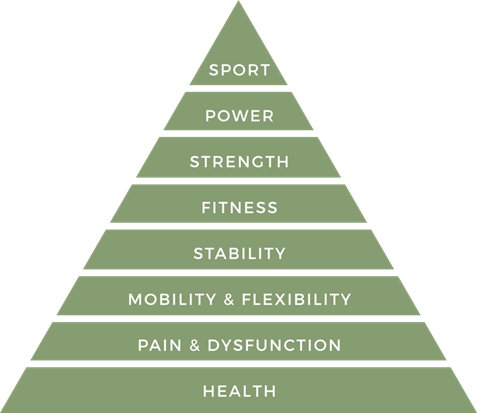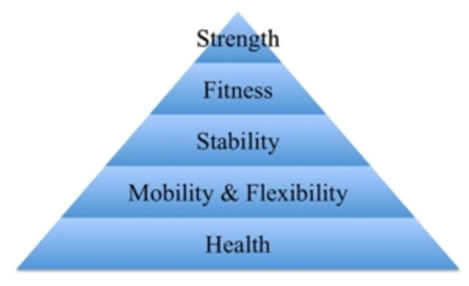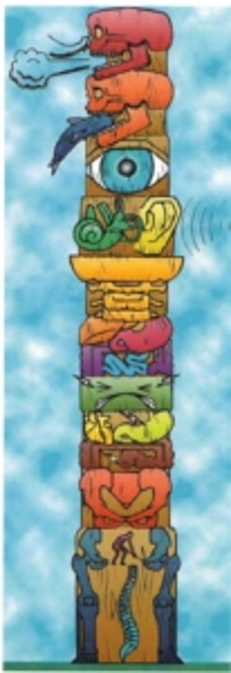
Want to reduce your risk of all-cause mortality by 21%?
It is certainly an intriguing concept to think that one single physical test could be predictive of all-cause mortality. But is the test reliable and if so what are the reasons why it can predict your risk of dying prematurely?
I found this article particularly interesting because 18 years ago when I began practicing as a physiotherapist I set a challenge for one of my very first clients. At the time ‘John’ was 68 years old and came to me for chronic lower back issues. After getting him ‘clinically clear’ (pain free and dysfunction free) I then used a range of corrective exercises to help restore full functional movement. I then set a larger goal for John, “I want you to be able to complete these same 10 tests in 10 years from now.”
- In standing, lean over and touch your toes without bending your knees
- Perform one push-up in perfect form.
- Squat to full depth and back up keeping your heels flat on the floor.
- Be able to perform 5 alternating lunges per leg with bodyweight
- Be able to get down onto the ground, lie on your back, roll to your front, roll to your back, and then get back up to standing with no assistance.
- Be able to step up and down on a 30cm box continuously for 5 minutes.
- Go for a 30-minute walk without stopping.
- Squat to full depth holding a 5kg weight or object, then stand back up and press that object overhead.
- Perform a two-foot jump from the floor up onto a 20cm aerobics step landing on two feet.
- In half-kneeling, front foot directly in front of grounded knee, balance for 30 seconds on each side.
Now for a 70-year-old who was already in good shape and playing golf and tennis, this seemed like a very easy test to complete. Little did we both know that we would still be working together 18 years later and have the opportunity to complete this test every year for 18 years.
You likely have two questions at this time:
1. Can John still complete this test now that he is 86 years old?
Yes, John has been diligent in looking after his physical health and functional movement patterns during this time and can complete this test quite easily. The only test that poses a slight challenge is the two-foot jump up onto a 20cm aerobics step.
It’s worth noting that at 86 years old John has stated that he is the only one of his friends who can complete all of these tasks. In fact, many of them find it difficult to pick something up off the floor, stand up from sitting, or climb a set of stairs.
2. Is John suffering from ill health of any kind?
For privacy reasons, I will not list the health challenges that John has faced and overcome in the last 18 years. With that said, the article being discussed looks at all-cause mortality in relation to functional ability, not prevalence of disease. And John is certainly alive and active in the community at 86 years old with no end in sight.
THE STUDY
Ability to sit and rise from the floor as a predictor of all-cause mortality.
https://www.ncbi.nlm.nih.gov/pubmed/23242910
Watch a quick Introduction of the Sit to Rise Test.
- The study evaluated 2002 adults aged 51-80 years old
- The subjects were evaluated on their ability to sit to, and rise from, the floor.
- The subjects were given a score from 0 to 5 for their ability to sit and a second score from 0 to 5 for their ability to stand back up. One point was subtracted from 5 for each support used (hand, knee, side of leg, forearm).
- A total score out of 10 was then calculated.
| Four Categories |
| 0 to 3 |
| 3.5 to 5.5 |
| 6 to 7.5 |
| 8 to 10 |
- The results were clear, lower sit-to-rise test (SRT) scores were associated with higher mortality.
- The authors of the study concluded that musculoskeletal fitness, as assessed by the SRT, was a significant predictor of mortality in 51 to 80 year-old subjects.
- The study found that there was a 3-year shorter life expectancy among subjects placed in the lowest score category compared to those subjects with the best score category.
- Of even greater interest, each increment in the SRT score was associated with a 21% reduction in all-cause mortality. In other words, for every single additional point a subject achieved up the scale, they reduced their risk of dying by a further 21%.
The authors of this study felt that a decline in health-related physical fitness may be responsible for this increase in all-cause mortality.
- A reduction in muscle mass and strength
- A reduction in joint flexibility
- A reduction in physical independence and reduced ability to fully perform a wide range of activities of daily living
- An increased risk of falls
- Loss of mobility or functional ability
I certainly feel that a simple Sit-To-Rise Test (SRT) could be an accurate predictor of all-cause mortality for subjects 51 to 80 years old, however for reasons that are far more in-depth than what has been discussed by these authors.
The Performance Pyramid
The Effortless Superhuman developed the concept of the performance pyramid after nearly two-decades of clinical experience. Thousands of Effortless Superhuman (EF) clients have benefitted from the Performance Pyramid and the simple concepts it represents. I feel as a practitioner that it’s important to continually remind myself of the importance of satisfying each level of the pyramid before moving on to higher levels. I have solved many challenging cases simply by starting at the base level (HEALTH) and working my way upward. Similar to climbing a ladder!

For a more in-depth review of The Performance Pyramid simply download the free e-book available from the Effortless Superhuman website https://www.effortlesssuperhuman.com.au
If we consider The Performance Pyramid in relation to this article, then anyone scoring less than eight (8) on the SRT is likely to be lacking in the mobility and flexibility, stability, fitness and strength levels of the pyramid.
The authors of this study aimed to eliminate the ‘Pain and Dysfunction’ level of the pyramid by screening out subjects that presented with any relevant musculoskeletal limitations that could affect the SRT. Likewise, they aimed to eliminate the ‘Power’ and ‘Sport’ levels of the Pyramid by screening out any subjects who regularly competed in sports events. As such we end up with a Pyramid that looks like this.

The challenge I have with this study is not whether its findings are accurate or not. In other words, I believe the SRT can accurately predict the risk of all-cause mortality in subjects 51 to 80 years old. My challenge is with their discussion of why the SRT is an accurate tool for predicting all-cause mortality. Their discussion focuses solely on the ‘Mobility and Flexibility’, ‘Stability’, ‘Fitness’, and ‘Strength’ levels of the pyramid in an attempt to explain why people with low scores exhibit a 5-6 times higher risk of dying. What the authors failed to discuss was whether the SRT, despite its simplicity, is actually a powerful predictor of underlying health challenges.
Upon careful assessment, each subject with a low score may be evaluated and deemed to be lacking in different levels of the pyramid: Poor mobility and flexibility, weak stability and balance, poor aerobic or muscular endurance (fitness), and/or a decline in muscle mass or changes in muscle fiber type (strength). But what needs to be considered is whether these changes in the musculoskeletal and neurological systems are reflective of stress, inflammation or disease in the other systems of the body.
Systems of the Body
| Integumentary | Nervous | Digestive |
| Muscular | Lymphatic | Urinary |
| Skeletal | Respiratory | Reproductive |
| Cardiovascular | Endocrine |
For greater clarification on this point we can turn to the excellent work of healing guru Paul Chek and his scientifically proven totem pole concept. Which from the top down flows through Respiration, Mastication, Vision, Balance, Hearing/Listening, Upper Cervical Function, Visceral Function, Limbic/Emotional Relationships, The Sacrum and its relation to the central nervous system, and The Slave Joints.
© 2016, Paul Chek, reproduced with permission.
 When Paul Chek makes reference to the “Slave Joints” of the body he is referring to:
When Paul Chek makes reference to the “Slave Joints” of the body he is referring to:
- The shoulder, arm, hand
- The spinal column from C3 to L5
- The hip, knee, ankle and foot
Obviously, when completing the sit-to-rise-test (SRT) these slave joints come into play and any restrictions or functional limitations in the slave joints would compromise the subject’s ability to complete the task resulting in a lower score. This point should be obvious to most people. However, what may not be as clear or widely understood is that these slave joints and their ability to function is heavily influenced by the systems above in the totem pole.
- Respiration
- Mastication (Chewing)
- Vision
- Balance and hearing/listening
- Upper Cervical Function
- Visceral Function (Internal Organs)
- Limbic/Emotional Relationships
- The sacrum and its relationship to the central nervous system
Paul Chek has stated that … “problems in any of the slave joints are most commonly the result of compensation stress from changes made by the central nervous system to keep you alive.” Paul goes on to say that … “most problems in the slave joints are the result of problems that have not been identified and addressed in the higher order systems depicted in the Chek Totem Pole (CTP).”
Returning to the study, one has to consider whether the SRT is not only a reflection of the health of the musculoskeletal and neurological systems but also the higher order systems as reflected in the CTP. Although ‘compensation stress’ in the ‘slave’ joints may be limiting performance on the SRT it may indeed be a deeper reflection of the subjects’ overall health status. And this may be why the SRT has been proven to be an accurate predictor of all-cause mortality.
One limitation of the study discussed by the authors is that the SRT cannot predict the cause of mortality – stroke versus heart attack versus cancer versus autoimmune disease. What this may suggest is that the SRT can predict that there are challenges at the base of The Performance Pyramid (Health) or in the higher order systems as presented in the Chek Totem Pole. However, it cannot tell you WHICH system(s) is/are inflamed or diseased and as such cannot predict the likely cause of mortality.
But certainly, a low SRT score should be a strong motivating factor to investigate all other systems within your body and make the necessary changes needed to improve your score to eight, nine or ten out of ten!
A Final Thought
The authors of this study expressed that although a higher score on the SRT (8-10) demonstrated a lower risk of death, they were unable to quantify whether there was an increased quality of life associated with these higher scores. One would certainly think that a subject who scores well on the SRT (8-10) is also more likely to be able to walk, golf, play tennis, garden and go on vacations more easily. However, this may not be reflective of their level of happiness (social, emotional, mental and spiritual health).
Likewise, the authors stated that they were unable to determine whether higher scores on the SRT (8-10) enhanced the subject’s ability to carry out activities of daily living. One may question whether someone suffering from cognitive decline could still achieve a good score (8-10) on the SRT and yet find it difficult to perform activities of daily living with any level of proficiency.
My only criticism of the sit-to-rise test (SRT) is that it may give a false sense of security in some instances. If we return to my client “John”, his ability to complete the SRT with an 8-10/10 score may have suggested to us both that his risk of pre-mature death was low. And certainly, 18 years later he is still alive at 86 years old with no signs of dying any time soon. This may indeed be another example of the power of the SRT. However, the SRT would not have been an accurate predictor of his risk for disease – John has suffered from a range of diseases in the last 18 years including cancer. If we had searched further up the Chek Totem Pole or searched more thoroughly at the base level (Health) of the Performance Pyramid, we likely could have prevented many of these diseases from occurring.
So, the SRT may be an accurate predictor of all-cause mortality, however, this should not be taken as a predictor of your risk for disease.
The Effortless Superhuman Team
